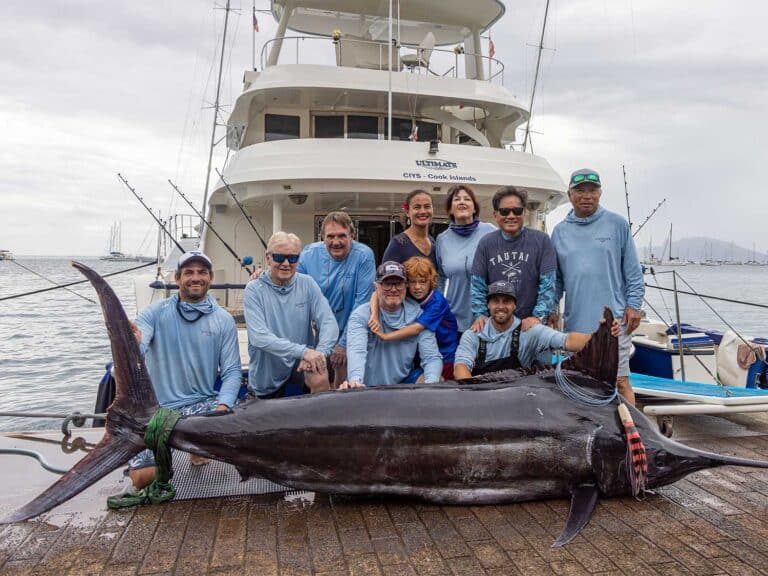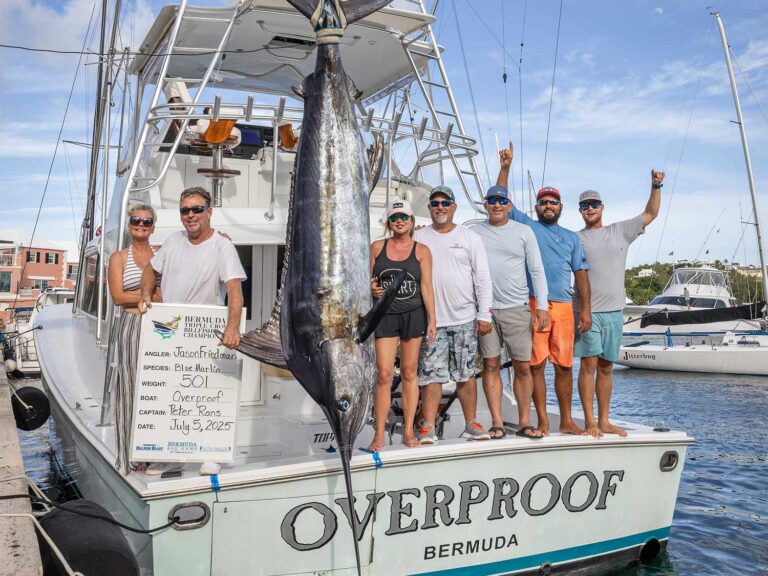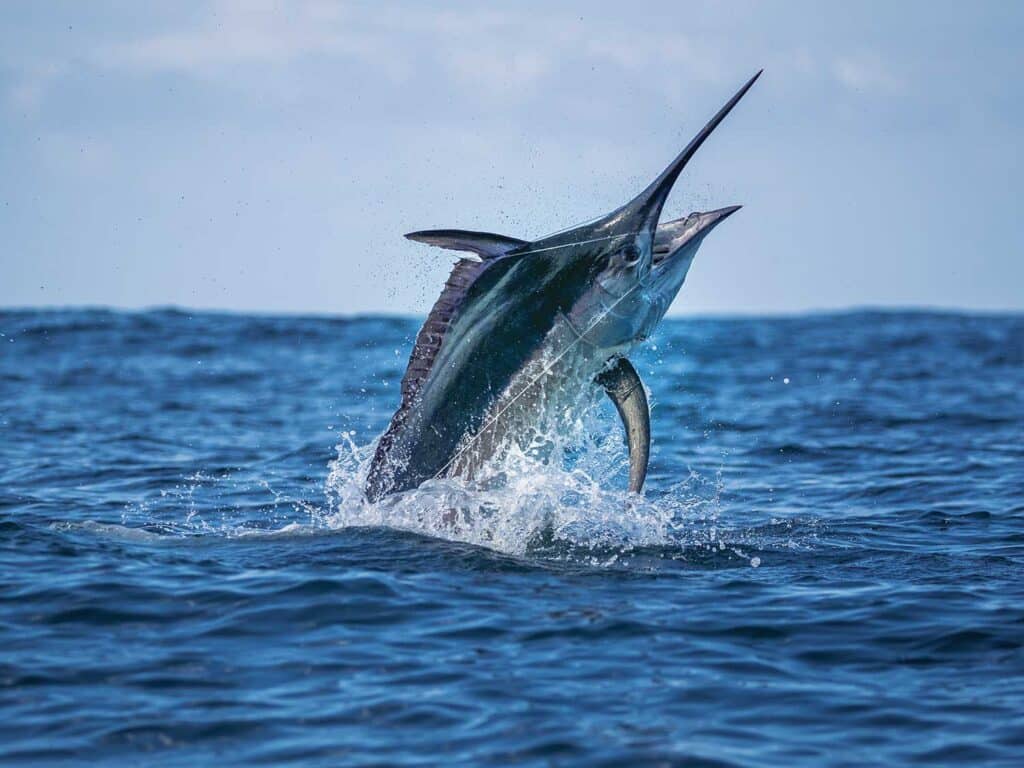
Special delivery: Sign up for the free Marlin email newsletter. Subscribe to Marlin magazine and get a year of highly collectible, keepsake editions – plus access to the digital edition and archives.
As an angler and marine scientist, questions such as “Do fish feel pain?” and “Do they suffer?” come up quite often. When deploying satellite tags on billfish, I regularly get asked if the insertion of the tag’s dart causes pain. And in college, I remember my professors not always agreeing on the topic of whether fish feel pain at all, or even a little bit.
Over the years, the concept of fish suffering has been brought up in regard to the morality of recreational catch-and-release fishing by governments such as Germany, when they passed the Animal Welfare Act in the late 1990s. Also banning the practice last year, Colombia declared catch-and-release sport fishing unconstitutional based on the idea that fish are “sentient beings” and “might” feel pain, but killing the fish remains legal. After a quick online search, I found that peacock bass, one of Colombia’s more popular recreational targets, has a 95 percent survival rate when caught and released in a typical recreational fishery. So why would Colombia decide to require anglers to kill these beautiful fish that more often than not survive the process?
Although the precautionary approach to fisheries management is important to ensure that we have healthy fish stocks well into the future, making a legislative ruling based on a subjective concept without scientific evidence always astounds me, especially in the face of losing the precious and emerging recreational fisheries that Colombia has to offer. When the Colombia fishing ban was first announced, our IGFA representatives in South America asked me whether it is true that fish really are sentient beings that feel pain. Truthfully, I had a difficult time answering this question right away, so I did what any scientist should do: I dug into what has been published in scientific journals.
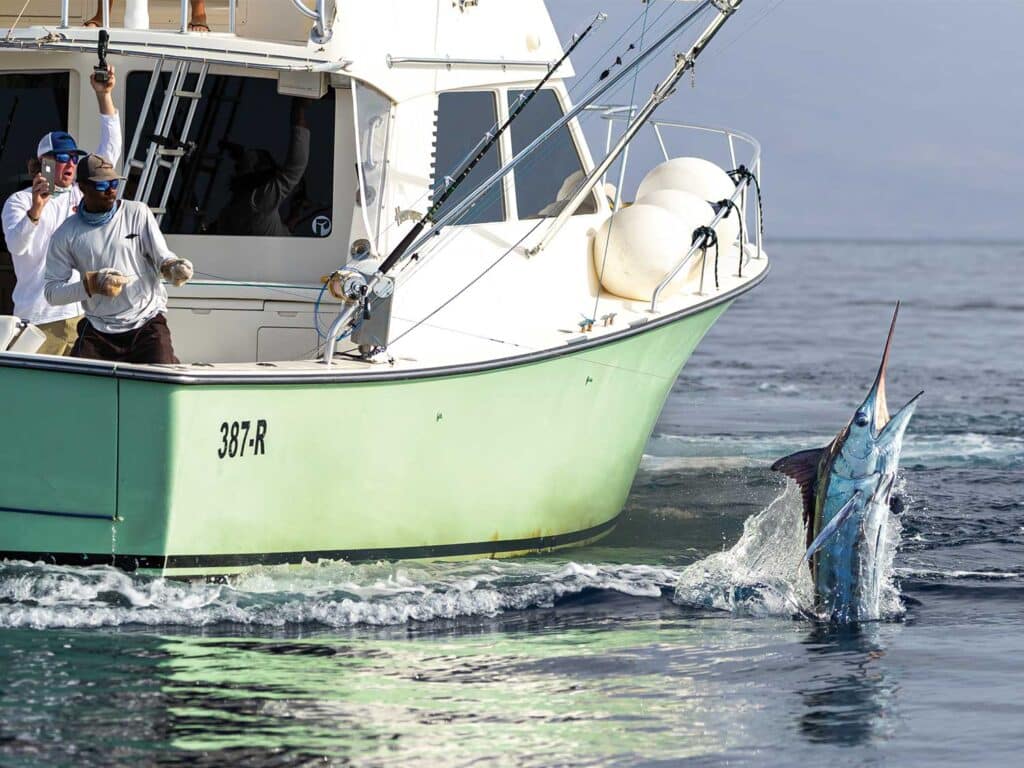
The Science
Unfortunately, the evidence is a bit contradictory, and many semi-scientific articles that effectively amount to individual opinions on the matter are available. In the process of exploring the evidence, I came across arguments on both sides, so I will lay out the facts—as well as my personal experiences—and let you make your own decision as to what you believe.
First, we need to address the concept of anthropomorphism, which is defined as “the attribution of human characteristics or behavior to a god, animal, or object.” When a person thinks of suffering, agony or pain, it is only natural to imagine it from the human-consciousness perspective. This is a fundamental problem when thinking of a cold-blooded fish that lacks the sophisticated and more newly evolved brain structures found in humans. One simply cannot compare fish consciousness to our own. I preface the facts laid out here by saying that I have a fish tank with a clownfish named Claude that I am convinced is an angry little punk that kills any potential new friends I put in the tank with it. I fully realize that fish probably don’t get angry or have friends, and definitely don’t know their names, but you get my point about how easy it is to anthropomorphize an animal.
Let’s start with the information available from this side of the debate: Fish are capable of feeling pain. One of the primary study designs resulting in the determination that fish can feel pain involved placing fish in a tank and exposing them to irritating chemicals. When exposed, the fish stopped eating, pumped their gills faster, and rubbed the affected area on the sides of the tank. This behavior led scientists to believe the fish were suffering and under stress from the irritant. Another popular series of studies looks at a fish’s response to electric shock and whether it flicked its tail or changed feeding habits in the area where it might get shocked. In all of these studies, the scientists determined that the fish felt pain—or fear—because their response was more than a simple reflex. Other studies examined the response of the hormone cortisol when a fish is exposed to a stressful situation and found elevated levels in the fish’s blood, indicating that there was a physiological response to the stress. It seems obvious—the scientists cause harm or stress to the fish and they responded as a human might, but are these behaviors truly an example of fish feeling and processing pain as we know it?
Another train of thought is that it might be evolutionarily advantageous for an animal to feel pain as a method to prevent injury, implying that the fish can learn from a negative experience. For example, goldfish can learn to avoid areas associated with negative stimuli, and their memory improves with increasing intensity of the stimulus—in this case, electric shock. Again, we must ask ourselves if this qualifies as pain or agony the way humans experience it.
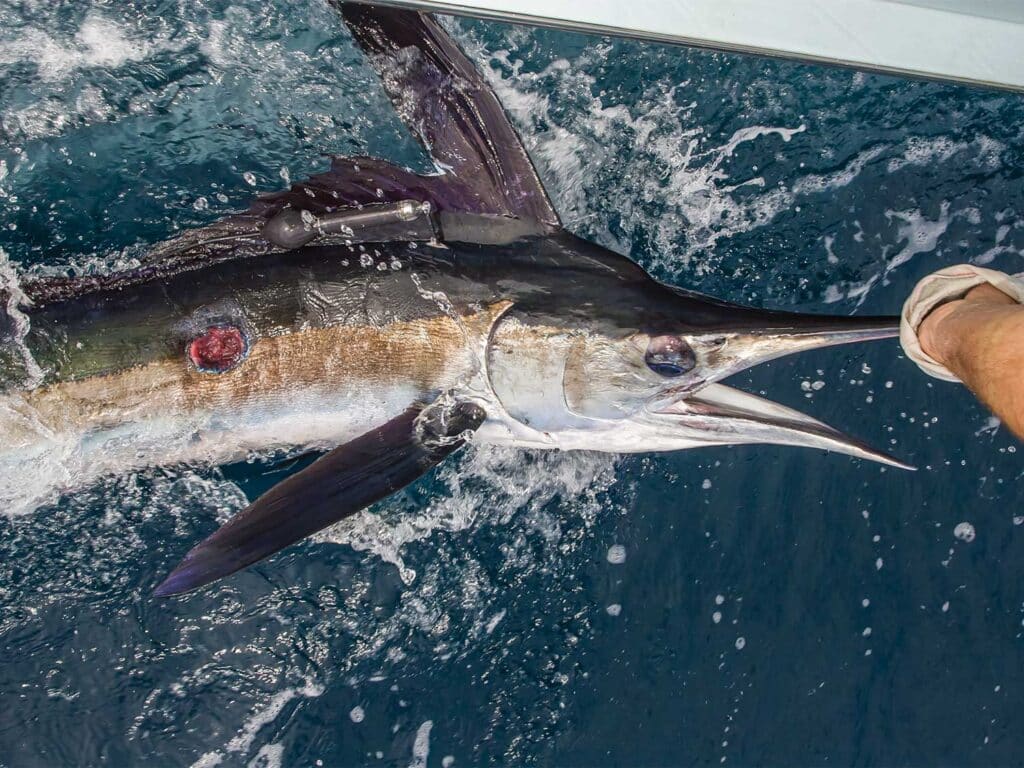
What Is Pain?
The other side of the scientific debate states that these studies are misleading because the results are based on human criteria and that pain is a psychological state. This leads to the more important question: What is pain? According to a 2018 publication by the International Association for the Study of Pain, “Activity induced in the nociceptor and nociceptive pathways by a noxious stimulus is not pain, which is always a psychological state.” This side argues that there is confusion regarding nerve reception, consciousness and pain versus an innate behavioral response.
In humans, we have what are called nociceptors, which activate upon stimulation. This is an important distinction because stimulation does not necessarily equate to pain. There are two types of nociceptors—A-delta-fiber and C-fiber receptors—as well as neural pathways that transmit signals from the receptors through the spinal cord and into the brain. Specialized regions of the cortex of the brain are involved with the processing of pain. The cerebral cortex is where consciousness is generated, and many scientists believe that consciousness is an essential condition for pain as we understand it.
The first type of nociceptor, A-delta-fiber, signals localized stimulation such as when you cut your finger, feel the cut happening, and you naturally move your finger away from whatever is causing it. The second type, C-fiber, is abundant in humans and results in sustained, longer-term pain from the injury following the initial stimulus. If you think of placing your hand on a hot stove, the initial response might not necessarily cause you agony, but if you innately remove your hand from the stove, then the burn response from the C-fiber nociceptors, working with the brain’s cortex, causes the sustained pain and the comprehension of what that pain means so that you don’t make that mistake again. The consciousness/psychological state of this pain is also developed through those specialized regions of the cortex.
The fish brain lacks a cerebral cortex, which is the primary reason this side of the debate believes that fish cannot experience the sensation of pain. This lack of cerebral cortex is also thought to prohibit the consciousness necessary for pain and fear. Fish have been found to have A-delta-fiber nociceptors but very few C-fiber nociceptors, implying that they process only that initial stimulus and do not have the capability for sustained severe pain. Sharks and rays have no nociceptors at all but still show a response to stimuli similar to bony fish. Because of the lack of ability of a fish to generate consciousness without a cerebral cortex, and with no known substitute in their brain structure, it can be determined that it is unlikely to experience pain as a psychological state and thus cannot suffer.
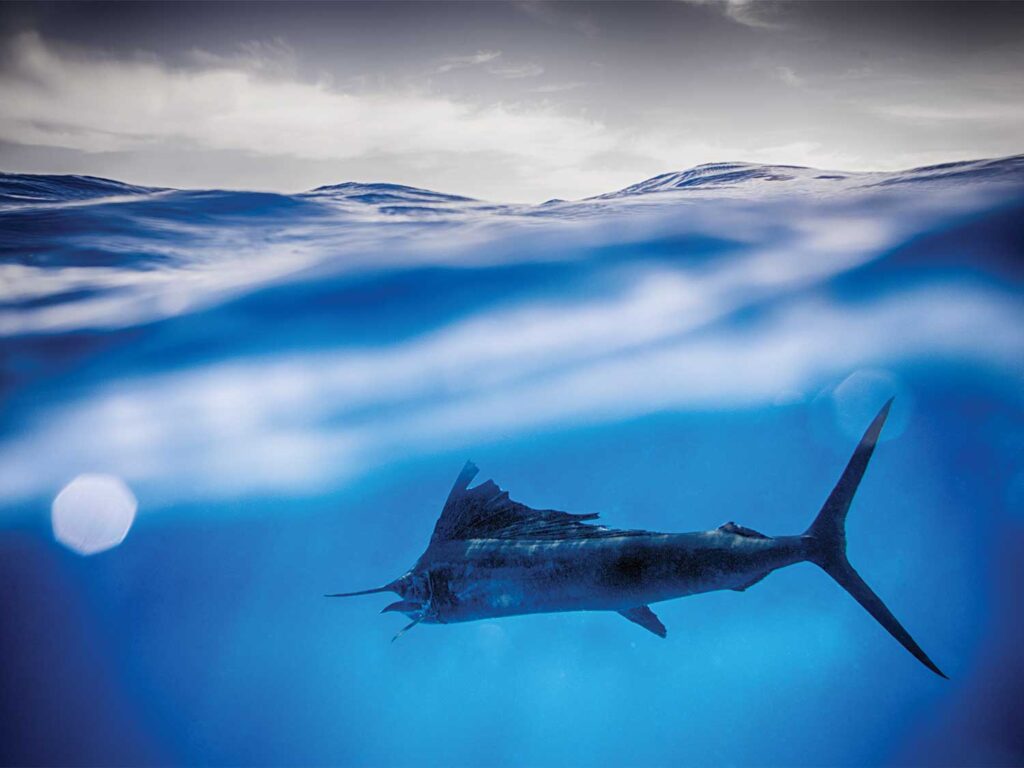
Morality: Catch, Tag, Release
Having laid out the contrasting perspectives of the scientific community and the reasoning for each, I think that it is pertinent to provide my personal experience and thoughts on the topic of fish pain. I have been satellite-tagging billfish and some other species for about 12 years now. Tagging requires the insertion of a fairly large metal or plastic dart tethered to a satellite tag. The dart is inserted into the flesh of the fish more than halfway through, just under the dorsal fin and between bones known as pterygiophores, which run down from the fin toward the spine. Imagine being stabbed in your shoulder more than halfway through toward your back. Of all the fish I have been part of tagging, probably well over 100 of them, only a couple of times have I witnessed a clear response to the insertion of the tag’s dart. Typically, the fish are tired from the fight by the time they are ready to tag, and getting the sophisticated “piercing” doesn’t seem to effect the fish any more than catching and wiring it.
When the fish is tagged and still green, I have seen them try to escape, but it is difficult to distinguish between them fighting on the line and escaping the actual tagging. This response seems to be more of a natural reflex to a stimulus, not necessarily to pain. Following the release, billfish tend to dive down to overcome the process of being caught and to recover. It is not possible to determine if they are recovering from trauma or simply reoxygenating their blood after the fight. Based on a recent study that looked at sailfish and blue marlin tail-beat frequency [also see “Release Recovery” in the February issue of Marlin], it has been hypothesized that the recovery period is related to the oxygen deficit, with recovery times lasting only a matter of hours.
This brings us to another subject to consider: the effect of catching and releasing a fish. Many proponents of fish feeling pain say that it is immoral to hook a fish in its mouth, where they have many nociceptors, because it causes unnecessary suffering if you don’t plan to harvest the fish. In fact, this is the basis of Germany’s and Colombia’s fishing ban. Now imagine a fish eating a whole crab or a forage fish such as a pinfish that has extremely sharp spines. One has to imagine this would cause a minor injury to the mouth of the predator as it crushes the crab, or even as it tries to swallow the pinfish. I’m recalling all those times I ate a tortilla chip and inserted it into my gums only to go back for more the next time a plate of nachos made an appearance. Are these fish like me and willing to deal with some irritation for a snack, or do they not suffer when a fish spine stabs them in the mouth? How about the damage found on sharks from their aggressive mating behavior, or the examples of hammerhead sharks with venomous sting ray barbs found embedded in their mouths and jaws? Wouldn’t it be evolutionarily advantageous for the shark not to feel pain considering the benefits of a large, high-calorie meal or the opportunity to reproduce?
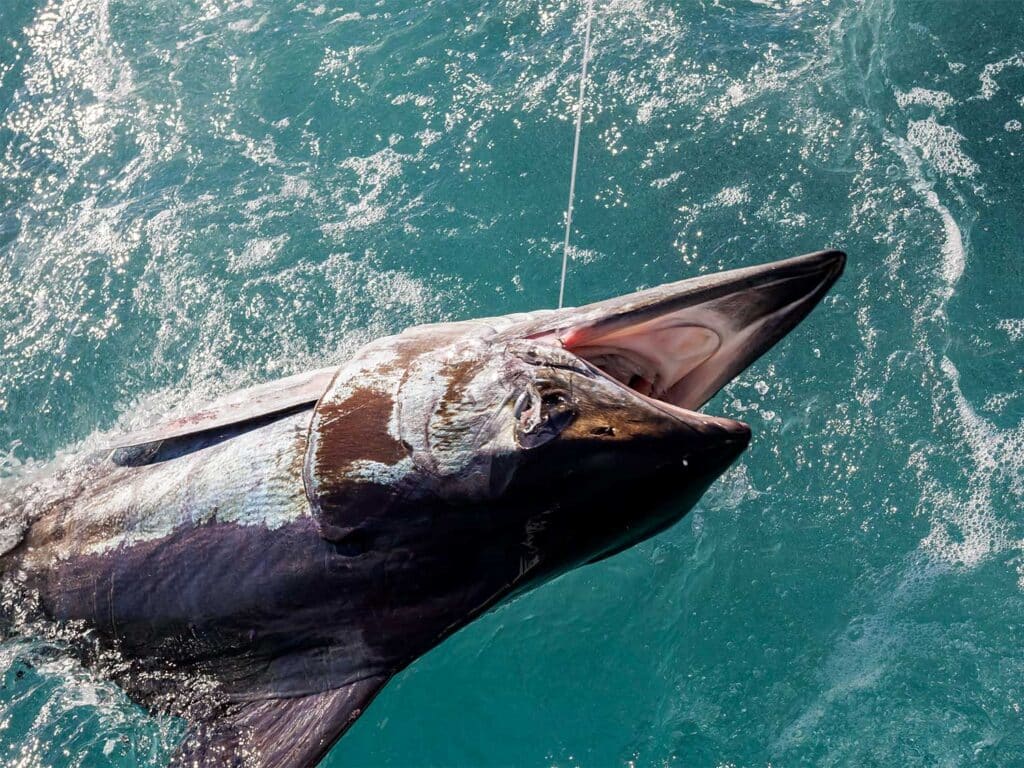
I was fishing in a billfish tournament in the Bahamas recently, and we were catching a lot of unwanted small mahi, cutting the line next to the hook, and letting them swim off so that we could get back to marlin fishing. By about the fifth or sixth mahi, I took a closer look and realized that it had about three new-looking hooks already stuck in its mouth, all strikingly similar to the ones we and other nearby boats were using. This fish was clearly not stressed about being caught more than once over a short period—and even continued to eat. Was this just a dumb individual or did the catch-and-release process not impact its behavior?
Similarly, I have witnessed goliath grouper with a massive collection of hooks surrounding their jaws from years of stealing anglers’ catches. There are also numerous other occasions where fish were caught, tagged and released, only to be caught again within a period of hours.
Read Next: New research reveals potential shifts in blue marlin habitat.
I will leave it up to you to decide whether you believe fish feel pain in a way that a human can comprehend, but it shouldn’t stop you from considering how your fishing practices might impact the fish you release. Regardless of the pain discussion, it is always good to minimize injury to the fish you plan to release to maximize its chance of survival. Using circle hooks, as well as reviving and releasing your fish, allows them to grow, reproduce, and potentially be caught again—to the delight of the next generation of anglers.
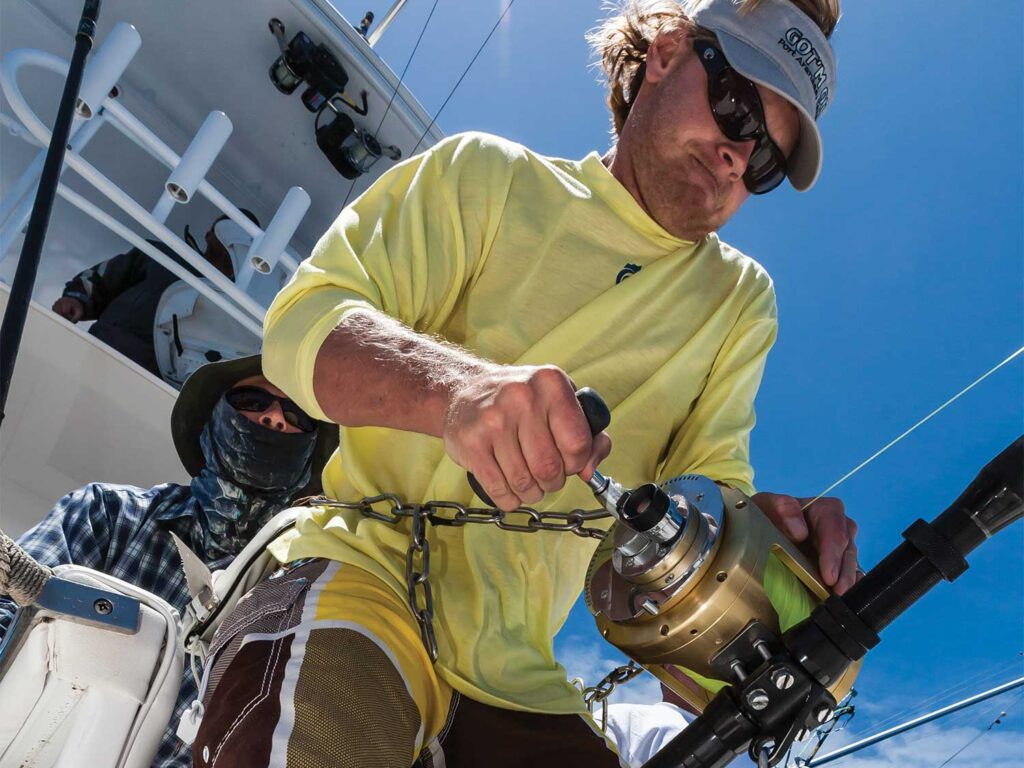
Do Your Own Research
If you would like to delve further into the topic of fish pain on your own, there are a few resources from both sides that I would recommend.
One of the main sources used by the side believing that fish feel pain is the book Do Fish Feel Pain? by Dr. Victoria Braithwaite. Braithwaite explains the research conducted and concludes that fish do suffer. This publication has been adopted by many animal-rights organizations.
On the other side of the debate, there are several scientific publications from the past 15 or so years. Many of the more physiological topics explained in this article come from a publication by Browman et al. (2018), where the authors outline which aquatic animals experience pain, and do a good job of separating the scientific from the ethical and relating the discussion to the current regulatory environment for animal welfare. Multiple other publications authored by James Rose and Brian Key, among others, are available; each of these focuses on physiology and the concept of consciousness, concluding that fish are not capable of feeling fear or pain.




